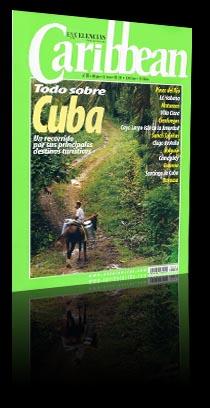El Morro–Cabaña Park: a historic adventure at the entrance of the city
The traveler who seesæfor the first time and from a distance—the entrance to Havana Bay, may think that the fortresses surrounding it, has emerged from the sea along with the island, they represent a treasure of a history and legend which have been gained during centuries of existence of the Cuban capital. Los Tres Reyes del Morro Castle. The crag opening to Havana bay was called El Morro. Its construction started around 1589 and it was concluded in 1630, under the management of an Italian military engineer by the name of Bautista Antonelli. El Morro & Its Architectural Beauty. The construction of a renascent style was expected since its builder was an Italian and was erected at the end of the 16th century æwas outlined "forming a broken polygon and a system of degrading terraces towards the sea so as to create successive curtains of defensive fire up to the water level". A tower which was used as a lookout and as a belfry is located in the northern end of the construction, replaced in 1844 by the current Havana lighthouse. San Carlos de la Cabaña Fortress. Between 1763 and 1774, San Carlos de la Cabaña Fortress was completedæin honor of the King, the name of Carlos was added to the original name. This fortress forms a solid vertical barrier of some 700 meters, while the land bulwarks are protected by ditches and has an underground communication with its neighbor, El Morro. San Carlos de la Cabaña. History & Tradition. The new built fortress, which according to some estimations was big enough as to accommodate a true military town, had 10 canons, bronze howitzers and batteries of all types of caliber. This work cost some 14 million pesos and it is said that the King asked for a telescope in order to admire the fortress, because he thought that a work of such magnitude, as was described to him, should be seen from Madrid. La Cabaña Fortress was also a witness of sad events, especially in the place known as the Foso de los Laureles (Ditch of the Laurel Trees), where many people, lovers of justice and sovereignty were killed. Nine O’Clock Cannon Fire in Havana. In other times, it was necessary to let the population know at what time the doors of the walled city were to be opened or closed. For this, they used a cannon fire, first from the navy ship which was anchored in the port, and afterwards from La Cabaña, but at different times over the years. In this place, one of the most rooted and attractive ceremonies of Havana takes place every day: the "nine o’clock cannon fire". Every evening, a group of soldiers dressed in their seventeenth-century uniforms, makes that Havana citizens stop doing anything when they listen to the customary shot and take a look at their watches so as to set them at 9:00 p.m. Heritage of Mankind. Los Tres Reyes del Morro Castle and the San Carlos de la Cabaña Fortress were declared Heritage of Mankind in 1982 by UNESCO. Since 1991, they are a multipurpose facility which provide cultural, historical, natural and recreational services. What once were inexpugnable military fortresses, symbols of the power of the metropolis, they have become now bulwarks of another power: that of culture. In what today is called El Morro–Cabaña Park, was opened on February, 2001; it covers an area of 6,000 square meters and it is divided into 7 pavilions and 66 rooms, of which 26 have air conditioning. Among the new different services are exhibition organization, the holding of events and fairs, projection of films and every type of cultural activities. To render all these services, the new facility has a press room, a product exhibition room, conference rooms, offices for negotiations, executive offices, service for fair organization, modern assembly and panel system, audio video, data show, filming in outdoors locations, and appropriate furniture in each facility.






























































